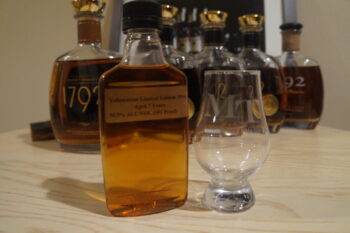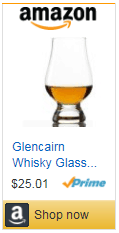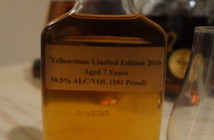ModernThirst was provided a sample of this whiskey for review with no strings attached. The opinions and ratings are our own.
What it is
 From the press release:
From the press release:
This year’s limited edition combines two extra-aged rye mashed bourbons – a stately 12-year and a bold 7-year – hand-selected and finished for several months in new toasted wine barrels. The result is a small batch legendary bourbon with a truly unique complexity and character.
“We used 28 new wine barrels with varying levels of toast – I was interested in how toasting versus charring would contribute to the bourbon,” says Steve Beam, president and distiller of Limestone Branch Distillery. “The result was a delightful nose that is full of vanilla, sweet tea and summer fruit with a hint of smoke.”
Bottled at 101 proof and available in 750ml bottles signed by Steve Beam and nestled in commemorative tubes, Yellowstone Limited Edition offers a taste profile of spiced oak, roasted coffee with creamy notes of vanilla, rich chocolate and fresh berries, and a smoky caramel finish. Approximately 7,000 bottles of this bourbon are being produced this fall at Limestone Branch Distillery, and the suggested retail price is $99.99.
- ABV: 50.5% (Proof: 101º)
- Mash Bill: unknown (mixture of two rye recipe bourbons)
- Barrel Entry Proof: unknown
- Barrel Char Level: unknown
- Secondary Aging: Toasted Wine Barrels
- Age:7 Years
- Producer: Limestone Branch (Sourced)
- Price Paid: Media Sample ($99.99 MSRP)
- Availability: Limited
Packaging
Tall, sloped bottle with dark label. The bottles are packaged in commemorative tubes similar to the YellowStone Select packaging. Very nice.
Appearance
Dark, golden amber.
Nose
Dark, juicy red fruits greet the nose with aromas of plums, grapes, and port. There is plenty of pleasing vanilla and oak as well.
Palate
Immediately, the rye content is evident with a prickly black pepper spice on the rear palate. But there are heavy notes of vanilla and maple syrup on the front palate that give way to the spice. The mid palate gets a quick burst of herbal green tea, some mild cloves, and a hint of black cherry before the rye kicks in.
Finish
The rye continues to be the main exhibit, but at the tail end of this medium to long finish, the dark fruits and wine barrel finish make another appearance with plenty of toasted oak.
Synopsis
My initial impressions were positive with this sip, and that did not change throughout my tasting. There is an extremely heavy note of black pepper rye throughout the entire sip. It’s almost too much, but the wine barrel finish helps tone it down to a manageable level. Overall, I’m generally not a huge fan of wine barrel finished bourbons, but with the heavy rye, it was a necessity with this bourbon. In the end, it works, and it works well. The result is a spicy/sweet bourbon with excellent creamy mouthfeel. Whether or not this justifies dropping a benjamin on a bottle is up to the consumer, but the product itself is a tasty little sip.




10 Comments
if it finishes in a wine barrel, is it still technically bourbon or simply whiskey?
It almost certainly is still bourbon. Bourbon regulations only tell you what conditions must be met to be bourbon…in other words, the minimum requirements. There is no prohibition against flavoring techniques. However, it may not be STRAIGHT bourbon, since the barrel finish could be a technique used solely for adding flavor, which must not be used in STRAIGHT bourbon or whiskey.
It’s still a straight bourbon.
It’s still a straight bourbon. It’s no different that Woodford Double Oaked or 1792 Port Finish.
While this product is made with Bourbon it’s a bit of a gray area as to if the finished product is still, by definition, Bourbon. Bourbon must be aged in new charred oak vessels. No coloring or flavoring may be added. The use of used wine barrels brings into question the ability of this whiskey to meet the above definitions. The TTB is letting these finished products be labeled Bourbon, for now. Though they have let questionable products through in the past and changed their stance. If you ask Stave & Thief of Louisville, the official educator of the Kentucky Distillers Association, they will tell you this is not technically Bourbon. This also applies to Angel’s Envy and the previously mentioned 1792 Port Finish. Woodford Double Oaked is different. They use a brand new charred oak barrel for the finishing. Woodford does still qualify as a Bourbon.
This topic is up for debate. In my opinion, the way Bourbon regulation is currently written, these finished products are not technically Bourbon as they are aged in used barrels and flavoring is added.
Technically, it’s STRAIGHT bourbon that cannot have any coloring or flavoring added. Blended bourbon may have flavoring or coloring added. By regulations as written, I think they really should be labeled one of two ways:
“Straight Bourbon Finished in _____”
or “Blended Bourbon made from ______”
Hi Bill. Love Modern Thirst, have been visiting for quite some time. Thanks for taking the time to provide great Bourbon content!
I hate to be a stickler but I have a passion for Bourbon accuracy so here goes. Bourbon cannot have any coloring or flavoring added. Full stop. If any color or flavor is added, and it has the word Bourbon on the label then it’s a whiskey “made with Bourbon”. Or “Bourbon flavored with X”.
The term “Straight Bourbon” has one single requirement to be placed on a label. It must be aged at least 2 years.
Blended Bourbon, as defined by the TTB:
“Blended whisky produced in the U.S. containing not less than 51% on a proof gallon basis (excluding alcohol derived from added harmless coloring, flavoring or blending materials*) straight bourbon whisky.”
It, also, cannot contain coloring or flavoring.
All of these definitions can be found in the TTB’s Beverage Alcohol Manual, chapter 4. And the Code of Federal Regulations, title 27, part 5.22 “The standards of identity”.
Thanks and happy to chat more about Bourbon any time!
Hi William, Thanks for reading! We love discussion, even of a regulatory nature. Using TTB guidelines for labeling can be tough, since they’re not always up to date with trends in the industry, and worse than that are usually ambiguous or contradictory.
The problem with this case (Yellowstone LE) in particular is that the TTB and 27 CFR don’t make a determination if wood barrels that have been used to age another spirit is just considered “wood” or is considered an added flavoring agent. Because 27CFR 5.39(C) specifically addresses the impact of wood on a spirit or whisky, and exempts it from labeling requirements when it is introduced from contact with the oak container:
§5.39 Presence of neutral spirits and coloring, flavoring, and blending materials.
(c) Treatment with wood. The words “colored and flavored with wood ___ (insert chips, slabs, etc., as appropriate)” shall be stated as a part of the class and type designation for whisky and brandy treated, in whole or in part, with wood through percolation, or otherwise, during distillation or storage, other than through contact with the oak container. (emphasis mine).
This has been the clause that producers/bottlers refer to with regards to not listing barrel finishes. The writing of the CFR5.39(c) makes is clear that storage barrels do not constitute an added flavor ingredient. However, it is likely an antiquated notion in need of updating since it doesn’t take into a account whether or not the barrel was pre-used and still contains flavors or residue from the previous liquor. Common sense tells us that is MUST be a flavoring addition, otherwise there’s no point in doing it. But common current interpretations of the ambiguous rules of the CFR, it doesn’t necessarily NEED to be listed on the bottle.
The most ethical approach, and one I would use were I a producer, would be to list the class/type, and then “aged in _____” which would likely satisfy requirements whether the CFR was updated to include pre-used barrels as flavoring agents or not. Aside from being the transparent approach, it seems like it would be the best way to differentiate a product from competition anyway.
That’s all aside from the discussion of whether re-aging in used barrels violates the basic requirements for bourbon laid out by Congress in the first place.
Cheers!
Bill, thanks for keeping the conversation going I appreciate your reply and completely agree! Some of these guidelines are in desperate need of updating. I wonder if TTB is dragging its heels on this as to not upset producers who have made very big business around these gray areas….
There are some amazing whiskeys, and “Bourbons” out there that fall into these gray areas. Just because I question these technicalities doesn’t mean I don’t think many of these producers are making excellent whiskey!
I don’t really want to start plugging distilleries here but I just met the man behind Charbay Distillery in CA. Great example of producing whiskey labeled as “Flavored Whiskey” but it’s the furthest thing from other flavored whiskeys that probably come to mind. They are appropriately labeling their products and producing some amazingly unique spirits. But it makes me wonder if someone like Angel’s Envy had labeled their bottles with “Bourbon flavored with port wine”, how well would that have gone over? They made a marketing decision that has paid off very well 🙂
At some level, I think it’s just typical government inefficiency having a hard time keeping up with all the trends in spirits. The CFR gets updated 2-5 times per week, it seems, and yet it’s still ambiguous and outdated.
I tend to agree with producers that “flavored with” doesn’t really fit for barrel finishes. that said, I think it should be listed. For me, I would prefer that any secondary aging be listed plainly:
“Straight Bourbon finished in ______ barrels” would cover it for me, and would allow consumers to know what they’re getting. And that’s really the issue…consumers knowing what they’re buying.
So I would encourage producers to keep that in mind, rather than trying to push label boundaries, they should be trying to be transparent and honest with their buying public.
The review I posted today is another example of a really nice bourbon finished in secondary barrels. While it’s called OKI “Barrel Finish,” I still wouldn’t say it’s clearly and plainly labeled as to what it is. Another very knowledgeable blogger saw the photo on twitter last week and didn’t realize for two days it was a barrel finished version.